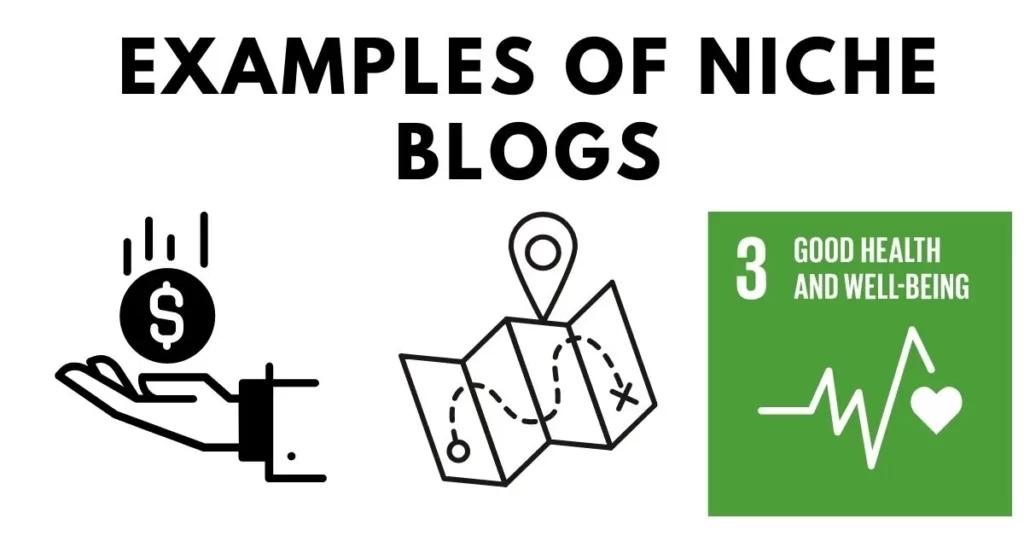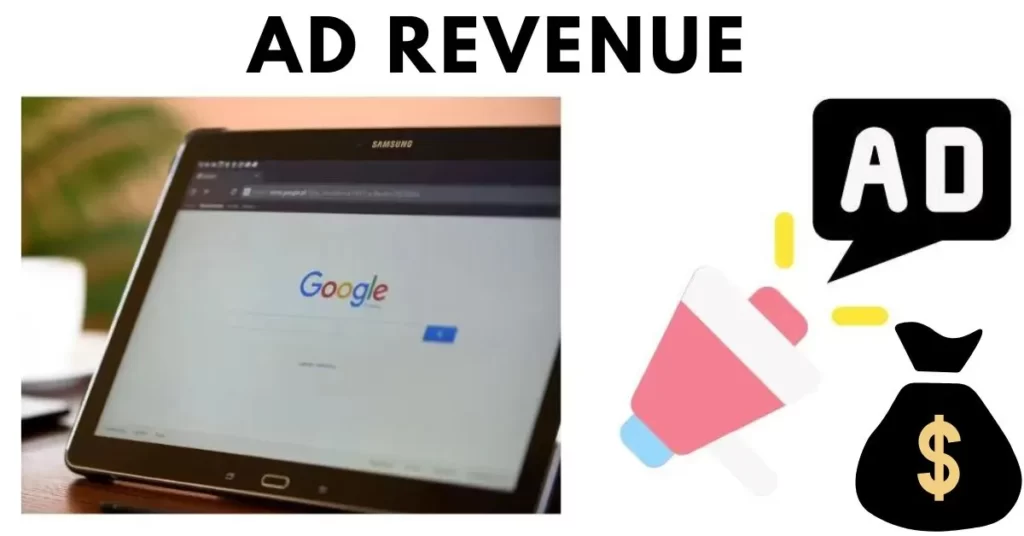Blogging has evolved from a simple hobby into a lucrative career option for many individuals. With the rise of the internet and social media, blogging has become an accessible platform for people to share their thoughts, expertise, and experiences with a wide audience.
However, not all blogs are created equal when it comes to generating income. To maximize earning potential, it is crucial to understand the types of blogs that tend to make the most money.
In this article, we will find out which types of blogs make the most money. By exploring these different categories, aspiring bloggers can gain valuable insights into the strategies and approaches that can lead to financial success.
Table of Contents
Niche-Based Blogs
Niche-based blogs are blogs that focus on specific topics or areas of interest. Instead of covering a broad range of subjects, niche blogs cater to a targeted audience with a specific set of interests or needs.
Examples of Profitable Niches:

- Personal Finance: Blogs that provide financial advice, budgeting tips, investment strategies, and insights into saving money.
- Health and Wellness: Blogs that cover topics such as fitness, nutrition, mental health, holistic wellness, and healthy lifestyle choices.
- Travel: Blogs that share travel experiences, destination guides, travel tips, and advice for budget-friendly or luxury travel.
Benefits of Focusing on a Specific Niche:
- Targeted Audience: Niche blogs attract a specific audience that is genuinely interested in the content, leading to higher engagement and reader loyalty.
- Authority and Expertise: By specializing in a niche, bloggers can establish themselves as authorities in their chosen field, gaining credibility and trust from readers.
- Monetization Opportunities: Niche blogs often attract advertisers, brands, or businesses looking to reach a specific target audience, creating potential partnerships and monetization opportunities.
- Lower Competition: Focusing on a specific niche reduces competition compared to broader topics, making it easier to stand out and gain visibility.
Tips for Identifying a Profitable Niche:
- Passion and Knowledge: Choose a niche that aligns with your interests, knowledge, and expertise. Your passion will drive your dedication, and your expertise will add credibility to your content.
- Research Demand and Competition: Conduct thorough market research to identify niches with high demand but relatively lower competition. Look for gaps or underserved areas within a niche that you can fill.
- Audience Engagement: Analyze existing blogs or online communities related to your niche. Assess the level of engagement and interaction to gauge the potential interest of your target audience.
- Monetization Potential: Evaluate the monetization possibilities within the niche. Consider whether there are opportunities for affiliate marketing, sponsored content, e-commerce, or other income streams.
Affiliate Marketing Niches
Affiliate marketing is a performance-based marketing strategy where bloggers or website owners promote products or services on their platforms. They earn a commission for each sale or action that occurs through their affiliate links. It is a popular monetization method for bloggers as it allows them to earn passive income by recommending products they genuinely believe in.
If you want to know how affiliate marketing works, please read our detailed blog.
Strategies for Maximizing Affiliate Income:
- Choose Relevant Products: Select affiliate products that align with your blog’s niche and audience’s interests. Promoting relevant products increases the likelihood of conversions and enhances reader trust.
- Create High-Quality Content: Craft compelling and informative content that educates readers about the benefits and features of the affiliate products. Provide value to your audience, making them more likely to make a purchase.
- Build Trust and Authenticity: Establish a reputation as a reliable and trustworthy source. Only promote products you genuinely believe in and have thoroughly researched. Be transparent about using affiliate links.
- Diversify Promotion Channels: Leverage various marketing channels such as email newsletters, social media, guest posting, and SEO to expand your reach and drive more traffic to your affiliate content.
- Track and Optimize: Use tracking tools and analytics to monitor the performance of your affiliate links. Identify which strategies are generating the most conversions and optimize your content and promotional efforts accordingly.
E-Commerce Blogs

E-commerce blogs combine the elements of blogging and online retail, allowing bloggers to sell products directly through their websites. These blogs serve as both informational platforms and online stores, providing a seamless shopping experience for their readers.
Examples of Successful E-commerce Blogs:
- Fashion and Beauty: Blogs that sell clothing, accessories, cosmetics, or skincare products directly to their readers, offering curated collections and style tips.
- Handmade and Crafts: Blogs that showcase unique, handmade items or craft supplies, allowing readers to purchase these products directly from the blog.
- Digital Products: Blogs that offer digital products such as e-books, online courses, or software downloads, providing instant access to valuable digital content.
Tips for Setting up an E-commerce Blog and Driving Sales:
- Choose a Platform: Select a suitable e-commerce platform that integrates seamlessly with your blogging platform. Consider factors such as ease of use, design flexibility, payment options, and inventory management.
- Curate Product Selection: Offer products that resonate with your blog’s audience and align with your niche. Conduct market research to identify popular products or unique offerings that cater to your readers’ needs.
- Compelling Product Descriptions: Write engaging and persuasive product descriptions that highlight the benefits and features of your products. Use high-quality images to showcase the items effectively.
- Seamless User Experience: Ensure a smooth and user-friendly shopping experience on your e-commerce blog. Optimize the website’s navigation, search functionality, and checkout process to minimize friction and encourage conversions.
- Promote Your Products: Utilize various marketing strategies such as social media promotion, email marketing, content marketing, and collaborations to drive traffic and awareness to your e-commerce blog.
- Provide Excellent Customer Service: Focus on delivering exceptional customer service to build trust and loyalty. Promptly respond to inquiries, address customer concerns, and ensure smooth order fulfillment and delivery.
Membership and Subscription Blogs

Membership and subscription blogs operate on a model where readers pay a recurring fee or subscribe to gain access to exclusive content, services, or community. This model offers a sense of exclusivity and creates a loyal community of dedicated readers.
Examples of Successful Membership and Subscription Blogs:
- Online Courses and Education: Blogs that offer online courses, educational programs, or mentorship opportunities where subscribers can access in-depth learning materials and guidance.
- Exclusive Content Communities: Blogs that provide access to a private online community where members can engage in discussions, receive personalized advice, or access additional content.
- Insider News and Analysis: Blogs that offer premium insights, industry news, or exclusive analysis in specific niches, appealing to professionals or enthusiasts seeking specialized information.
Strategies for Building and Retaining a Loyal Subscriber Base:
- Valuable and Unique Content: Create high-quality, exclusive content that goes above and beyond what is available for free. Offer specialized knowledge, expert advice, or unique perspectives that subscribers can’t find elsewhere.
- Tiered Membership Levels: Consider offering different membership tiers with varying levels of access and benefits to cater to different subscriber preferences and budgets.
- Community Engagement: Foster a sense of community by encouraging interaction among subscribers. Provide discussion forums, live Q&A sessions, or exclusive events to facilitate engagement and networking.
- Regular Updates and Fresh Content: Continuously provide new content and updates to keep subscribers engaged and interested. Regularly communicate with them through newsletters, notifications, or exclusive announcements.
- Member-Only Offers and Perks: Offer exclusive discounts, early access to products, or special perks to reward and incentivize subscribers, further enhancing their membership experience.
- Exceptional Customer Support: Provide dedicated customer support for subscribers, promptly addressing their queries, concerns, and feedback. Make them feel valued and appreciated.
Ad Revenue Blogs

Ad revenue blogs rely on generating income through advertisements displayed on their websites. Bloggers partner with ad networks or directly with advertisers to display relevant ads to their audience. They earn revenue based on the number of ad impressions, clicks, or conversions generated through the ads.
Different Types of Ads
- Display Ads: These are visual advertisements that appear in the form of banners, images, or text-based ads within the blog’s content or sidebar.
- Native Ads: Native ads blend seamlessly with the blog’s content, matching its style and format. They provide a less intrusive advertising experience.
- Sponsored Content: Sponsored posts or articles are created in collaboration with brands or advertisers and are clearly disclosed as sponsored content. They promote products or services while maintaining transparency.
- Video Ads: These are short video clips that play either before, during, or after the blog’s video content. They can be skippable or non-skippable.
Ad Revenue Generation Methods:
- Pay-per-Click (PPC): Bloggers earn revenue whenever a visitor clicks on an ad displayed on their blog. The payment is based on the number of clicks received.
- Cost-per-Mille (CPM): Bloggers earn revenue based on the number of ad impressions, with CPM representing the cost per thousand impressions. The payment is calculated for every thousand views the ad receives.
- Cost-per-Action (CPA): Bloggers earn revenue when visitors not only click on an ad but also perform a specific action, such as making a purchase or signing up for a service.
Strategies for Maximizing Ad Revenue:
- Optimize Ad Placement: Experiment with ad placement to find the most effective positions for generating clicks and impressions. Strategic placement includes within content, above the fold, or in the sidebar.
- Balance User Experience: Ensure that ads do not disrupt the user experience or overwhelm the blog’s content. Strike a balance between generating revenue and maintaining a clean, user-friendly design.
- Targeted Ads: Use ad networks or platforms that offer targeting options to display relevant ads to your audience. Targeting based on demographics, interests, or browsing behavior can increase engagement and click-through rates.
- Monitor and Optimize: Continuously analyze the performance of your ads using analytics tools. Monitor metrics such as click-through rates (CTR), impressions, and earnings. Adjust ad types, placements, or networks based on the data to optimize revenue.
- Consider Ad Blockers: Recognize that some visitors may use ad blockers, limiting the visibility of ads. Explore alternative revenue streams or encourage readers to whitelist your blog to support your ad revenue.
Sponsored Content Blogs
Sponsored content refers to blog posts, articles, videos, or any form of content that is created in collaboration with brands or advertisers. Bloggers are compensated for promoting or featuring specific products, services, or brands within their content. Sponsored content is usually marked or disclosed as such to maintain transparency with the audience.
Types of Sponsored Content:
- Sponsored Posts: Bloggers create dedicated blog posts that highlight and promote a particular product, service, or brand. These posts may include reviews, tutorials, or personal experiences related to the sponsored content.
- Product Placement: Bloggers incorporate sponsored products within their regular content, such as using or showcasing the products in videos, photographs, or written content.
- Collaborative Content: Bloggers collaborate with brands to create joint content, such as interviews, guest posts, or co-developed resources that mutually benefit both the blogger and the brand.
Benefits of Sponsored Content:
- Monetization: Sponsored content offers a direct revenue stream for bloggers. By partnering with brands, bloggers can earn income by promoting products or services through their platforms.
- Brand Collaboration: Sponsored content allows bloggers to establish relationships and partnerships with brands, potentially leading to future collaborations, brand ambassadorships, or additional opportunities.
- Diversified Content: Sponsored content can add variety and new perspectives to a blog. It offers opportunities to explore different topics, collaborate with experts, and provide unique content to the audience.
Conclusion on which types of blogs make the most money.
To make the most money from a blog, bloggers have several options to consider.
Niche-based blogs allow them to attract advertisers and secure lucrative sponsored opportunities. Affiliate marketing blogs enable them to earn commissions by promoting products. E-commerce blogs provide a direct revenue stream through product sales.
Membership and subscription blogs offer exclusive content and foster a loyal community. Ad revenue blogs generate income through strategically placed advertisements. Sponsored content blogs allow bloggers to collaborate with brands for monetization.
By combining different approaches, bloggers can maximize their earnings. However, success lies in delivering valuable content, maintaining transparency, and prioritizing user experience.
Choosing the right monetization methods that align with their audience’s interests is crucial for long-term profitability. Ultimately, bloggers should explore various strategies and find the right balance to make the most money from their blogs.

